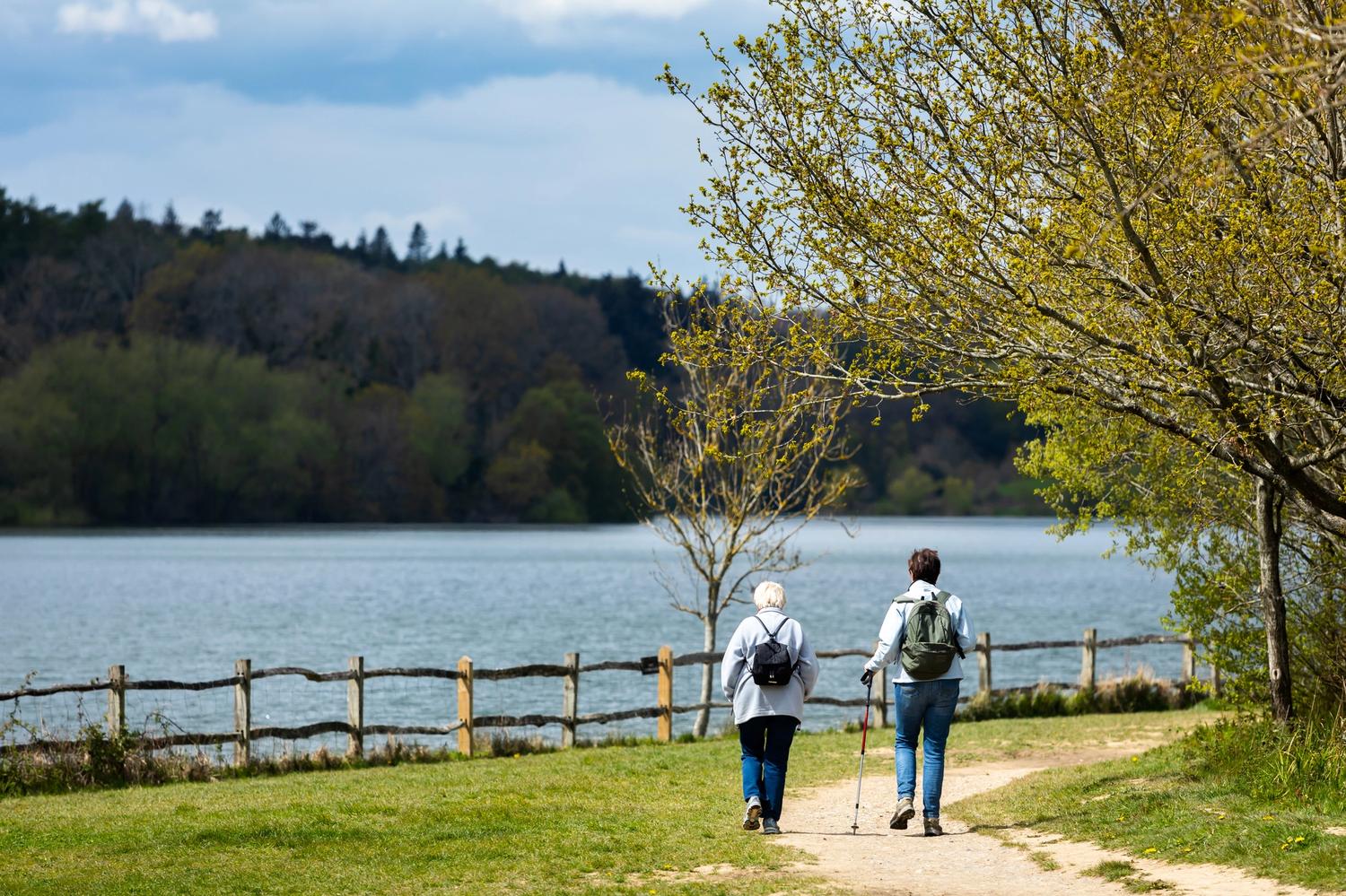Ardingly Reservoir, near Haywards Heath in West Sussex, is a Local Nature Reserve within the High Weald area of natural beauty. It is surrounded by 80 hectares of ancient woodland.
The reservoir was built in the early 1970s to provide water to the growing local population, help prevent flooding and regulate water flows in the River Ouse.
In the winter, when water levels in the River Ouse are high, we pump water into the reservoir, which can hold 4,773 million litres of water – equivalent to approximately 1,880 Olympic-sized swimming pools. We then either turn it into top-quality drinking water at nearby Shellbrook Water Treatment Works, or, when river levels are low, release it back into the River Ouse ready to be treated downstream at our Barcombe Water Treatment Works.


A wildlife haven

Ardingly Reservoir is home to more than 60 bird species, including kingfishers and nightingales, and is occasionally visited by migrating ospreys. Dormice are also known to live in pockets of woodland around the reservoir; although these notoriously shy, nocturnal creatures are incredibly elusive, they leave tell-tale marks on nibbled hazel nuts.
The reservoir site includes pockets of woodland with dozens of species of native trees, including ash, alder, oak and hazel. To encourage a diverse range of flora to grow in the wooded areas, we practice coppicing, the practice of cutting back trees to encourage new shoots to grow. This allows more sunlight to reach the ground, creating beautiful displays of spring flowers and providing habitats for birds such as nightingales and dormice.
Coppicing takes place continuously around the site, but each tree is only cut once every seven years. The coppiced wood is re-used to create fencing around the reservoir site and Arlington Reservoir in East Sussex.
Protecting water quality at source
We’re working with a PhD student from the University of Brighton to improve the quality of the raw reservoir water at source, as part of our innovative catchment management programme.
Our partnership with the University of Brighton helps us deliver industry-leading innovative research, and forms part of our statutory Water Industry National Environment Programme (WINEP) work.
In particular we’re looking at how we might use our award-winning catchment management approach to reduce the presence of algae on the reservoir's surface.
Elsewhere in the area, our catchment management team is working with farmers and landowners in the River Ouse catchment to reduce levels of metaldehyde, a pesticide found in some slug pellets, in the river water.
Although any unwanted substances are removed during our extensive water treatment process, it is more economical and sustainable to prevent these substances from entering the water in the first place.
Just a reminder...
- Ardingly Reservoir is a Local Nature Reserve, so please respect the Countryside Code and keep to footpaths and bridleways
- to protect the wildlife, we don't allow ball games, BBQs, drone flying or cycling on public footpaths
- swimming in the reservoir is dangerous and strictly prohibited
- dogs are welcome, but must be kept on a lead at all times
- please take litter home with you or put it in one of the bins provided.
Recreational activities
Walking Trail
Our Kingfisher trail offers a seven-kilometre scenic walk part-way around the reservoir, taking you from the dam wall, over the causeway and to the north-west tip of the reservoir before retracing your steps to return to the starting point.
Activity Centre
Ardingly Reservoir is also home to the Ardingly Activity Centre, located near the dam wall. The centre uses the reservoir for a variety of water sports and coarse fishing.
Directions
Ardingly Reservoir, Ardingly, West Sussex, RH17 6SQ
Ardingly Reservoir can be found approximately 1.5 miles to the southwest of Ardingly village. Take College Road out of the village and shortly after pasing Ardingly College take th next right turn, signposted to The Farmhouse Pre-Prep and Nursery. Continue to the end of the road, passing in front of Shellbrook Water Treatment Works on the left.
Public car park
Grid reference TQ 33487 28696
What3Words /// tested.suppose.fishnet
Facilities:
- Car parking
- Walking trail – seven kilometres
- Picnic area
- Café*
- Toilets*
- Watersports*
*Operated by Ardingly Activity Centre, visit ardinglyactivitycentre.co.uk(opens in a new tab) to find out more.
